Something worrying is going on with the world’s greatest lakes.
Slowly but surely, some of them rapidly vanish or have already almost completely disappeared.
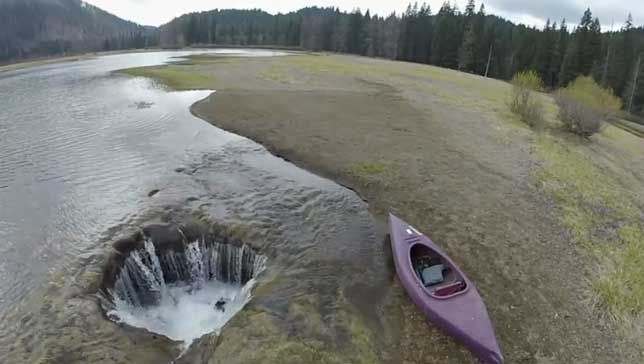
Today, water around the globe is disappearing faster than ever. Blue gold is privatized, sold and bought by huge corporations that only think about making always more money. Meanwhile, the large water reserves, such as huge lakes, are going extinct. Here we present 10 very large water bodies that have already dried up, or are rapidly disappearing around the world.
Protect your home and car with the best EMP, solar flares and lightning shield available…
1. Owens Lake, U.S.
The unquenchable thirst of Los Angeles is to blame for the dust bowl now known as Owens Valley.

Before drying up in 1926, Owens Lake covered about 108 square miles in California near the border with Nevada.
But in 1913, the Los Angeles Department of Water and Power diverted the Owens River into the LA Aqueduct.
2. Aral Sea, Kazakhstan
Once an oasis in central Asia and the fourth largest body of fresh water in the world, the Aral Sea began losing volume in the 1960s.
In an attempt to irrigate crops in the deserts of what is now Uzbekistan, the USSR had started diverting water from the Aral’s feeder rivers, the Amu Darya and Syr Darya, in the ’40s.
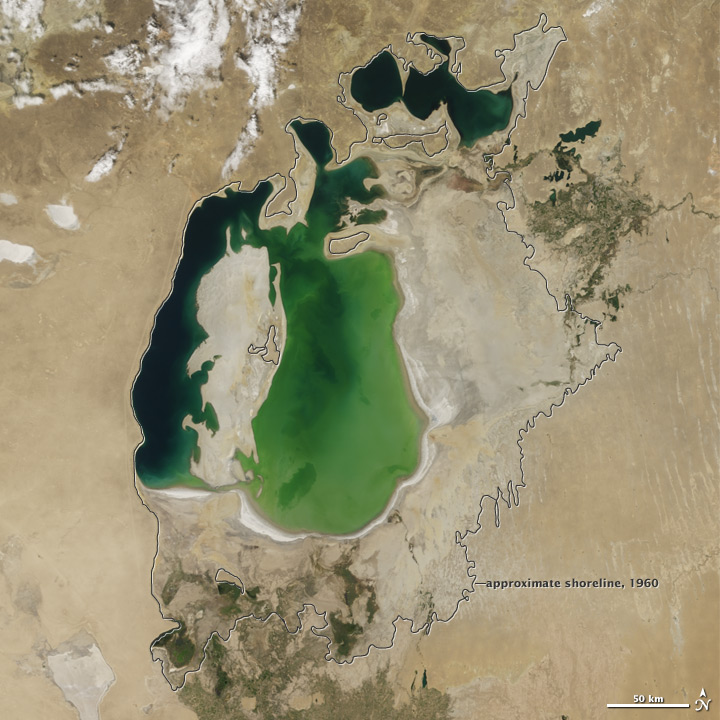
By 1986, the lake volume decreased to the point of becoming four distinct bodies of water.
Today, it can claim only about 10 percent of its former surface area of 26,300 square miles.
By volume, the lake has lost an estimated 167 billion gallons of water, more than the entire volume of Lake Erie.
Drink clean water at home… Get this filter now…

Still, there is some hope the Aral Sea will persist.
In 2003, Kazakhstan, Kyrgyzstan, Tajikistan, Turkmenistan, and Uzbekistan joined together to build the Kokaral Dam.
By 2007, the structure had slowed the drainage enough to increase water levels in the northern body by about 40 meters.
3. Dead Sea, Middle East
At the lowest point on Earth, the Dead Sea is slowly wasting away.
The last 30 years have seen a dramatic decrease in lake size as quickly as 3 feet per year.
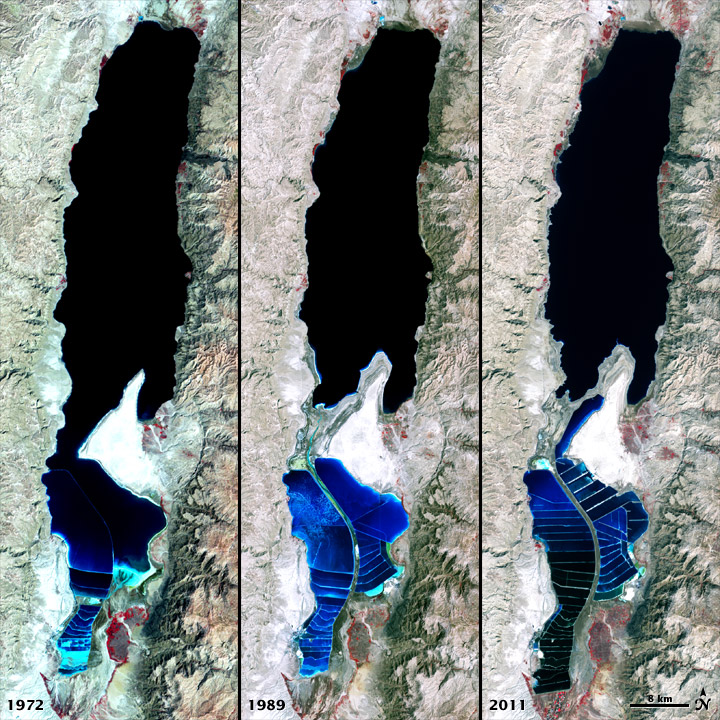
Two distinct bodies of water now characterize the Dead Sea.
The southern portion is home to ponds that are used to extract salts and other minerals. This part is eaten by giant sinkholes.
The northern body is still a beacon for tourists.
To slow down the drying of the Dead Sea, Israel, Jordan, and Palestine have agreed to a plan to pump in about 53 billion gallons of water per year from the Red Sea – more than 100 miles away.
4. Lake Fagibine, Mali
Lake Faguibine in Mali was one of the largest lakes in West Africa, at about 230 square miles.
But by 1990, droughts had completely dried the lake, forcing residents to seek subsistence from other resources.
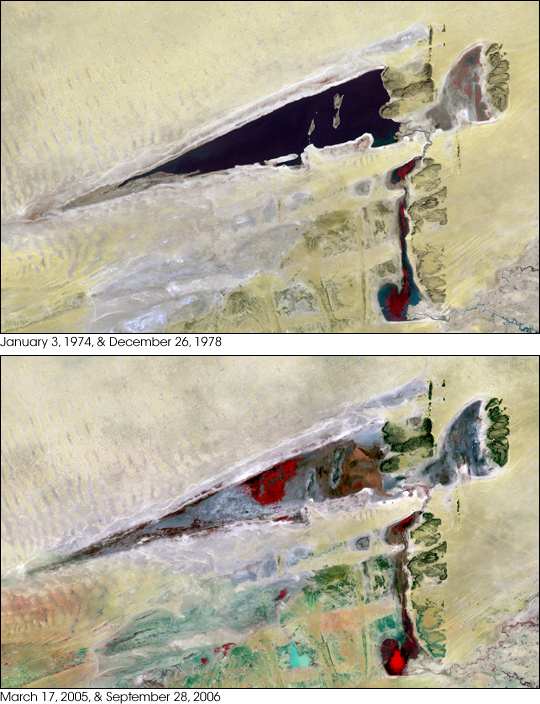
A return of rains in the last 15 years has added about six percent of former surface area to Faguibine, but long-term restoration appears impossible.
Health Ranger Store: Buy Clean Food and Products to heal the world…
5. Lake Assal, Djibouti
With temperatures reaching a scorching 125 degrees Fahrenheit during the summer, the evaporation of Lake Assal in Djibouti is an unavoidable reality.
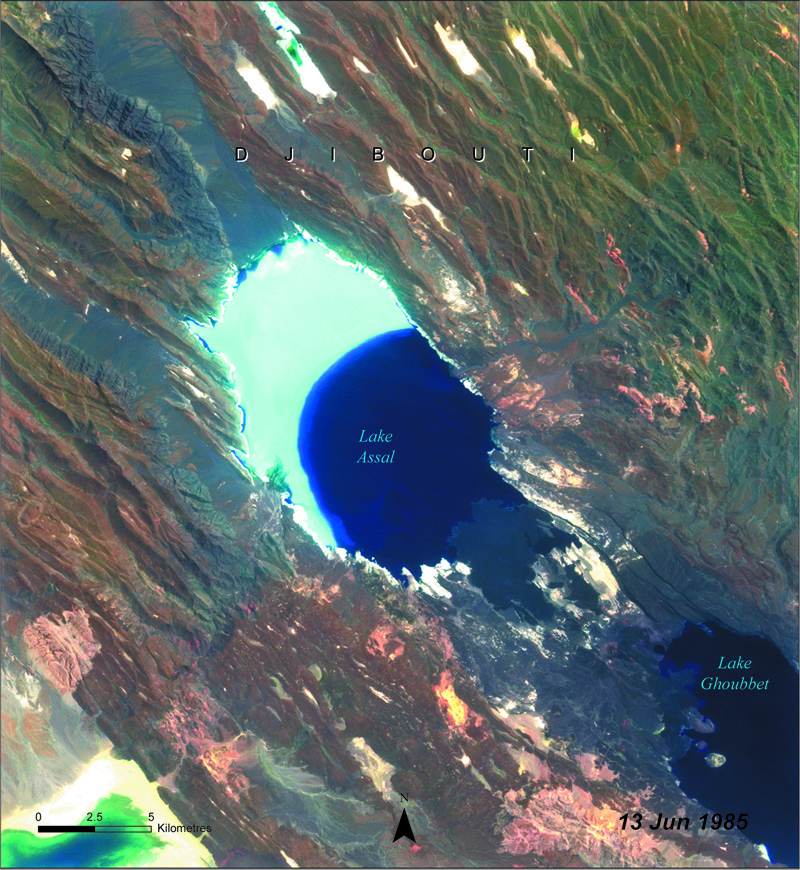
Housed in a volcanic crater, the body of water was likely separated from the Gulf of Aden, and the greater Indian Ocean, by lava flows.
In such harsh conditions, Assal sees little rainfall runoff to feed the lake.
Instead, its volume is replenished through subsurface water flow from the nearby gulf.
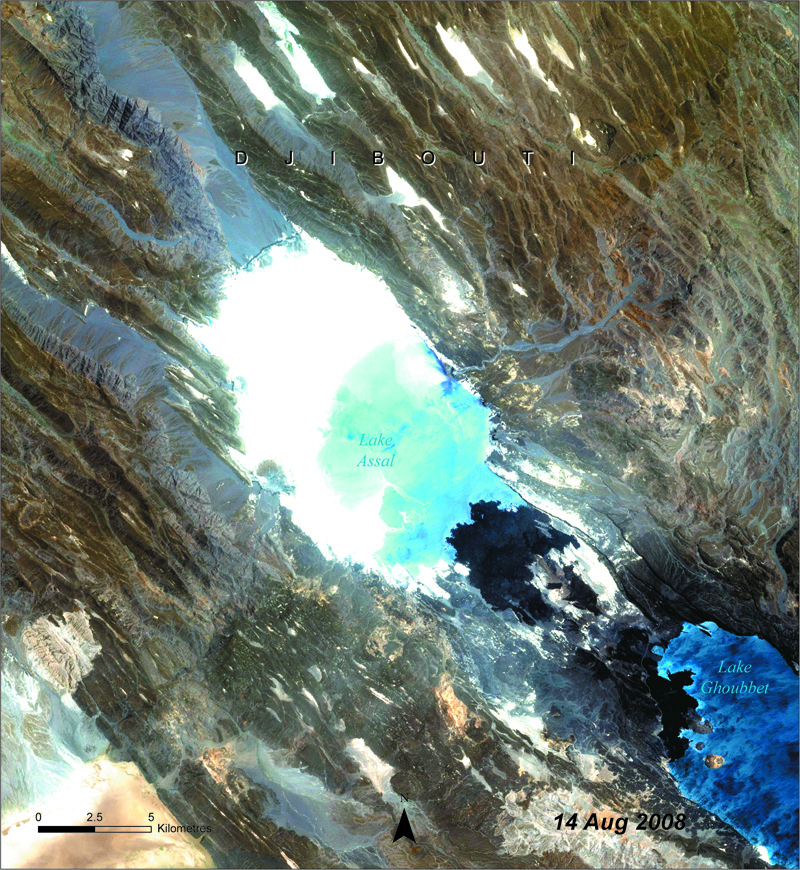
One of just a few lakes that has not shrunk due to water diversion, Assal is still an important natural resource for the local economy.
The lake is 10 times more saline than seawater, and its salt is harvested for distribution across Africa and Europe.
Prepare your retirement by investing in GOLD, SILVER and other PRECIOUS METALS…
6. Lake Chad / Chad, Niger, Nigeria, Cameroon
The Lake Chad basin in central Africa is an “ecological catastrophe” according to the United Nations.
The lake’s main feeder, the Chari River, was diverted to provide irrigation for farmers in different regions.
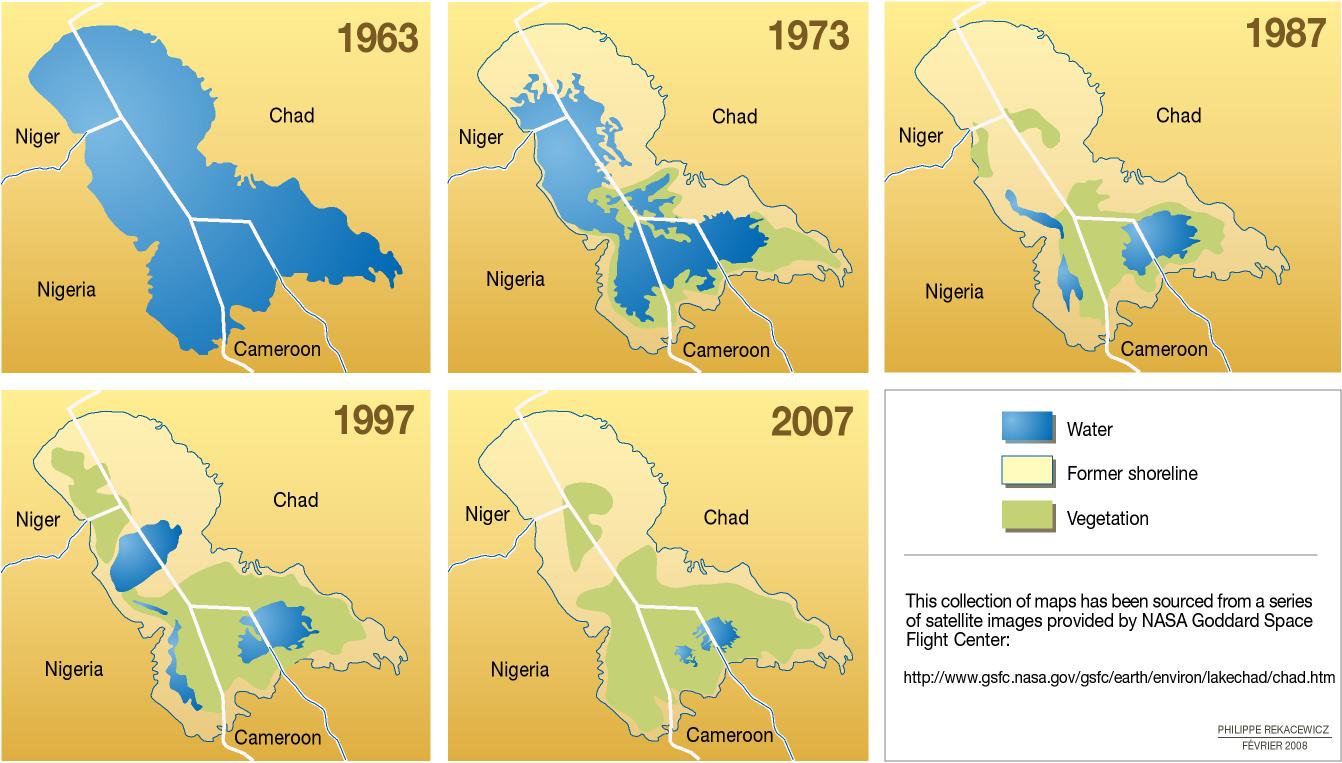
Between 1963 and 2001, the lake shrank by 95 percent to just 580 square miles. It had previously measured more than 10,000 square miles.
With the lack of water and marshes, dust chokes the area, beginning the process of dune formation and the desertification of a once lush habitat.
Chad, Nigeria, Cameroon, Niger, and the Central African Republic hope to pump water from the Congo River north toward the Chari, but the effects of diversion toward Chad remain unclear.
7. Lake Urmia, Iran
With six dams capturing a majority of water from 11 rivers that once fed the salt lake, Lake Urmia in northern Iran is evolving from a luxury vacation destination into a cracked salt bed.
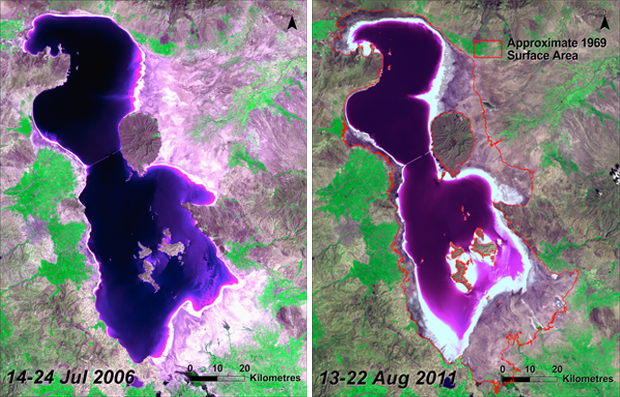
As big as 2,000 square miles, the lake was once among the largest in the Middle East.
Today, it covers just under 40 percent of that area.
Although energy and food production has benefited from the damming of the rivers, many environmentalists fear the long-term result of water diversion could be a nearly dry lakebed like the dustbowl of the Aral Sea.
You will ALWAYS have electricity with this portable power station…
8. Poyang Lake, China
China’s Lake Poyang the country’s largest freshwater lake.
In January 2014, it receded so far to reveal an ancient stone bridge that had been submerged for 400 years.
In 2012, during one of the country’s worst droughts, China’s official Xihua News Agency reported the lake had reached a new record low of 7.95 meters (about 28 feet).
Local authorities at that time even went to the extreme measure of air-dropping millet, corn, and shrimp for the hundreds of thousands of migratory birds that feed at Poyang.
And while mother nature is one of the main culprits, China’s disastrous Three Gorges Dam has also played a big role in withholding water from the lake.
Damming the lake, which is situated in the middle of the Yangtze River, has been proposed to restore lake levels for both economic and ecological benefits—but no imminent plans are in place, as the effects of the drought are forgotten during the wet season.
9. Lake Chapala, Mexico
The fate of Mexico’s largest lake, Chapala, is bad.
Historically averaging about 700 square miles in surface area, Chapala experienced its first major crisis in 1955.
A combination of drought and diversion saw the water level dip by about 7 percent, enough to wreak havoc on hydraulic electricity generation for the town of Guadalajara.
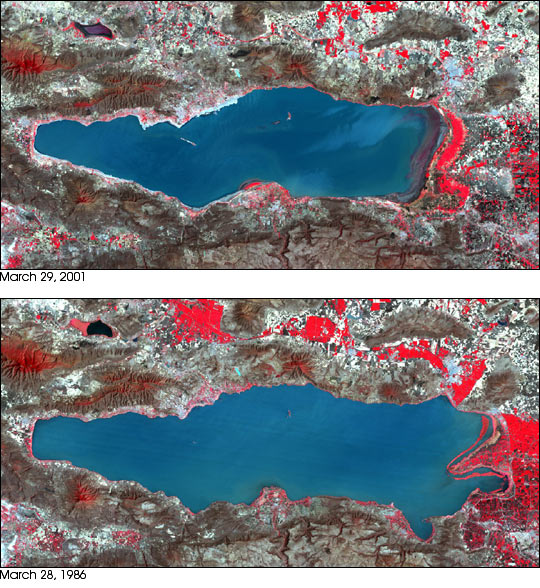
Although the lake rebounded throughout the later part of the century, by 2001 more than 25 percent of the lake’s surface area had disappeared.
Water levels nearly matched those of the crisis in 1955.
10. Great Lakes, USA/Canada
Staring across the vast expanse of Lake Michigan, it could be hard to recognize the signs of trouble.
But the Great Lakes reached their lowest levels in recorded history in 2013.
With a 1.5-foot average drop in water level across the connected Lakes Michigan and Huron since 1999, 2.5 million gallons have exited the body of water.
The main culprit for the receding lake level is the St. Clair River, a waterway that has been widened and deepened numerous times in the last century to provide a shipping channel between the upper and lower Great Lakes.
The cumulative effect of human engineering and mother nature’s power is an oversized drain spout at the bottom of Huron.
Humans have devastating effects on large lakes.
StrangeSounds.org is now running ad-free CLICK HERE TO SUPPORT MY WORK… I will send you a small gemstone if you give more than 25$… Thanks in advance!
Here some things to add to your disaster & preparedness kit:
- Protect your home and car with the best EMP, solar flares and lightning shield available…
- Drink clean water at home… Get this filter now…
- Health Ranger Store: Buy Clean Food and Products to heal the world…
- Prepare your retirement by investing in GOLD, SILVER and other PRECIOUS METALS…
- You will ALWAYS have electricity with this portable SOLAR power station…
- Qfiles is another great site for alternative news and information…



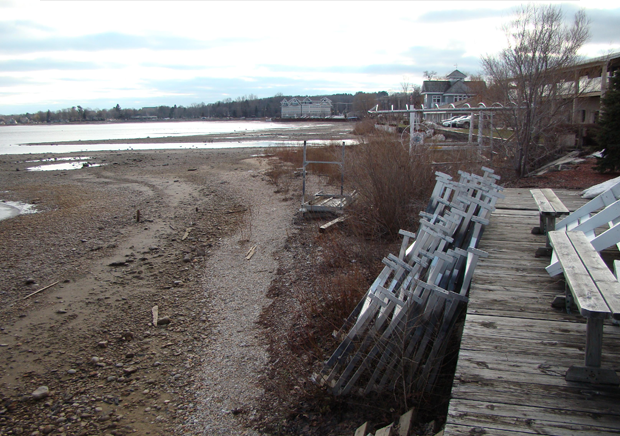











[…] N° 13 Bon nombre des plus grands lacs du monde sont actuellement en train de disparaître parce qu’ils s’assèchent rapidement. […]
Great post, thanks. We have been very dry in PA…Leaves are changing color already and dropping… early fall this year I predict… strange times.. strange weather, strange people…
The Great Lakes did recede.
Water did hit a low in 2013, which was when I sold my Georgian Bay island, which resulted in a signicant financial loss.
When one looks at the charts, the Lakes have ebbed and risen over time.
It begs the question of where, exactly, is all the water going?? If into the atmosphere wouldn’t Earth be much more humid as a whole?? And if it’s draining deep inside the Earth, why? Seismic/earthquake activity opening fissures?? Doesn’t any egghead scientist out there have a clue where all the water’s going?? This article raises more questions than it answers… I know… just reporting the facts.
Water evaporates in warmer temperature, then condenses and falls down as rain, floods the dry lands, runs off into the oceans, of which the water rises.
Glaziers melt in warmer temperature, then flood the rivers, and later do not have enough water for a continuous flow over the summers.
Warmer temperatures means less snow that stays over time for later release.
And yes, lack of cooler temperatures and increased evaporation and burning of hydrocarbons and hydrogen will increase humidity and reduce rain, hence increase overall humidity and prevent cool down at night.
Some parts of India measure over 60°C soil temperature already.
What happens when all this dries up?? Huge economic impact, mass migration, unparalleled cultural shifts, ghost towns and cities, realignment of all geography, or perhaps something bigger the earth is telling us?
The great Lakes are drying?…
how about breaking records and overflowing.
Please update your investigation with a simple web search…
I agree I live on the shore of Lake Michigan
Erosion is a huge problem from the high water levels. The lake ebbs and flows every 7 years roughly
I heard Nestles is trying to claim them.
“But the Great Lakes reached their lowest levels in recorded history in 2013.”
Deceptive quote!!!
I’ve lived on the St Claire River my whole life ( am 66 yo).
The Great Lakes have a natural cycle of about 15-20 years. The low was in 2013. It is now 2019 and we are flooding on the St Claire River with record highs. Many homes were unlivable this past two years, the county was giving out sandbags and many docks and boathouses (some decades old) have been washed away.
Can’t speak for the other drying up lakes, but some research is in order before accepting this article at face.
[…] Road Rage Shooting * Rare mosaic depicting Noah's Ark discovered in ancient synagogue * These great lakes are disappearing or have already gone around the world * VIDEO: How gap between police, black community worsened under Obama * Pamela Geller tweets: […]
[…] Source: strangesounds.org/2016/07/great-lakes-disappearing-vanishing-drying-up-pictures-video-collapse.html […]
Man has been F—king with Gods perfection from the beginning of time thinking he was better now we all know you guys are just screw ups with egos and GODS not happy & evil is dancing Comment:
How about the fact that obama started selling great lake water to China in 2013?
@Dr tari… really? Where is your evidence?
Not true, Waukesha county can’t even get water from the lake. Right next door to Milwaukee but out of the Great Lakes basin